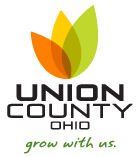UNION COUNTY ENGINEER
(1820-PRESENT)
Established in 1803 by the Ohio General Assembly, the office of county surveyor was one of the few public offices not provided for in the state constitution. Originally appointed by the court of common pleas, the county surveyor became an elective post in 1931, with a three year term. The surveyor’s primary tasks dealt with the survey of all lands which were sold or to be sold for taxes and the employment of chainmen to establish boundary corners. Additional duties such as reporting trespassing on public lands, transcribing maps and plats, and performing service similar to those of justices of the peace came in the late nineteenth century.
In 1906, the impact of the transportation revolution brought about an expanded need for road construction and maintenance. By virtue of a legislative act that year, the county surveyor gained engineering responsibilities with respect to roads, turnpikes, bridges, and ditches in the county. He was also directed to perform duties relating to the preparation of plans, specifications, and costs for the construction or repair of roads, bridges, ditches, culverts, draws and other public improvements (except buildings). Road maintenance duties were further expanded in 1919 when the surveyor received authorization to designate one of his deputies as a maintenance engineer in charge of such activities. In an effort to improve the general quality of those seeking election to the office of county surveyor, in 1935 candidates for office were to be “registered professional engineers and registered surveyors licensed to practice in the state of Ohio.” The 1935 act also changed the title of the office to that of county engineer, and set the term of office at four years. Since that time the Union County Engineer has also assumed the duties of building regulations for the unincorporated areas of the county.
In 1913, the Ohio General Assembly authorized boards of county commissioners to construct, maintain, and repair sewers and to operate sewage treatment works outside of incorporated municipalities within the county. The commissioners of counties with more than 100,000 in population were empowered to establish a separate sanitary engineering department. Special assessments or additional tax levies fund sewer construction; maintenance expense is covered by rates charged against users.
After 1917, the commissioners could also construct, maintain, and operate a water supply or waterworks system within the sewer district. The commissioners can contract with users outside the district to supply water. Since 1923, county commissioners have been able to establish sewer districts that might include part or all of the territory within an incorporated municipality, providing the governing council of the municipality concurs. Sewer districts may also provide for garbage and refuse disposal and contiguous counties may form a regional sewer district. In Union County the board of commissioners established the position of sanitary engineer in 1972 to operate, maintain, repair and construct county sewers and wastewater treatment plants; currently there are five wastewater treatment plants in the county. In 1989, the commissioners combined the offices of environmental engineer with those of the county engineer.
RECORDS OF THE UNION COUNTY ENGINEER
| Surveyor's Index | (1798-1965) |
| Virginia Military Surveys (VMS) | (1798-1848) |
